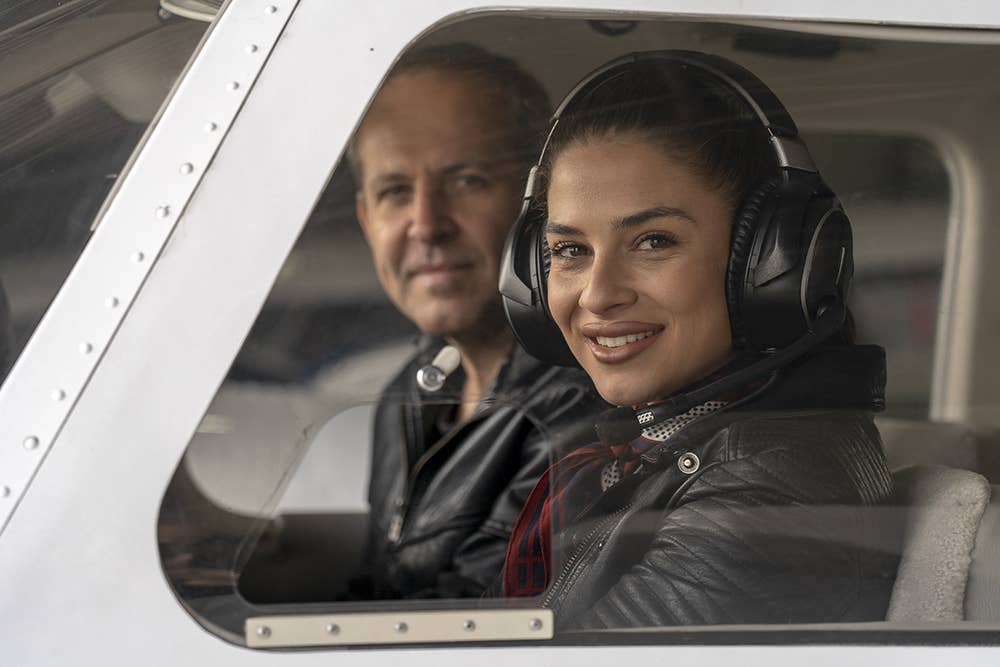Want to Tame the Pilot Shortage? The Intro Flight Begins the Interest
That first flight can either create a new pilot, or end in a missed opportunity.

A first flight can open up a whole world to a perspective pilot — if it’s done correctly. [File Photo: Adobe Stock]
Editor’s note: This article is the fifth in a six-part series examining the aviation industry’s pilot shortage and what can be done about it.
Jan. 14: An overview of the issue | Jan. 17: How the military is dealing with its shortage | Jan. 18: Recruiting right from the flight schools | Jan. 19: Outreach programs doing their part | Jan 20: The role of flight schools in creating pilots | Jan 21: Want to get your chops back? Here’s how.
I can still remember my intro flight. I was still in school, and had one of those birthdays that makes you set new goals. A friend who knew of my interest in aviation gave me a gift certificate to the local flight school.
The school, located at a non-towered field, had been open for decades. The walls were decorated with shirt tails from first solos and framed photographs of pilots and airplanes. The lobby was filled with people, some CFIs and learners at tables doing ground instruction. And on the couch next to the coffee machine were three “gentlemen of a certain vintage” wearing weathered A2 flight jackets and solving the world's problems.
“I’ve lost count of how many intro flights I have done over the years, but they are still my favorite part of the job.”
The CFI with whom I was to fly that day was dressed in khakis and a flight jacket, looking every part a professional pilot. The flight itself was short—just 30 minutes—but that day I learned:
- How to use a checklist
- How to inspect an airplane prior to engine start
- How to take off, climb, turn, and descend
- The postflight procedures
The CFI answered all my questions about earning a private pilot certificate. I felt like I was part of a community as I walked out of the flight school. Thus began my aviation career.
These days, I am the CFI. I’ve lost count of how many intro flights I have done over the years, but they are still my favorite part of the job.
Do the Intro Flight Right—the Flight School Perspective
Flight schools operate on razor-thin margins. Intro flights are often limited to a price point like $99 for marketing purposes and a flat rate for the CFI. These flights are kept short, often no more than 30 minutes on the Hobbs meter in the aircraft with the lowest operating cost, usually a two-seat airplane.
Sometimes, this can make for awkward situations. I was a commercial candidate at an FBO when a woman of generous carriage came in for an intro flight. She took one look at the Cessna 150 that she was supposed to fly in and her eyes filled with tears because she knew she wouldn't be able to fit in the airplane. The CFI, a tall, thin young man quickly sized up the situation, asking apologetically if she would allow him to pay the extra $20 so they could fly the Cessna 172. He explained that he found it a more comfortable airplane for him on account of his long legs. She got her flight, and that CFI modeled professionalism that impressed me so much I share this story with all my CFI candidates.
Weight, Contact Number are Important
Ideally, when someone calls the flight school to arrange an intro flight, the person who answers the phone should ask how much the person taking the flight weighs, explaining that aircraft are weight restrictive. If the customer is reluctant to give up this information, make the assumption that everybody weighs 200 lbs. and pair them with the smallest CFI the school has.
Make sure to get a callback number, because if the weather is poor or there is another issue, you can let them know before they come all the way out to the airport. Folks can get awfully cranky if they make the trip for nothing.
Be sure to ask if this is a gift for someone—you don't want to spoil the surprise. Get the contact number for the person who set up the flight, explaining that if there is a weather challenge you will call an hour before they have to head to the airport. Sometimes, you need to be sneaky. One guy surprised his girlfriend by telling her they had to go to the airport so he could pick up snow tires he bought from one of the mechanics.
A Hearty Welcome
When someone walks into a business, any business, one of the first things they expect is to be greeted. This is especially true at businesses where there is the potential to drop a lot of money.
The FBO or school needs to be physically welcoming, warm in the winter, cool in the summer, with a clean, fresh scent. With the pandemic, many businesses are big on the use of disinfectant protocol and have a bottle of hand sanitizer on the counters along with signage regarding the use of masks per local guidance.
Have an information sheet on what it takes to earn your private pilot certificate and follow-on ratings, such as instrument, and so forth. Make sure the clients get a copy of whatever interests them.
The school should have headsets for use and seat cushions for the vertically challenged wanna-be pilot. Have the client carry their headset out to the aircraft.
If the training center has a flight training device (commonly known as a sim), it can be very beneficial to have the client do one lap in the pattern as the CFI explains the process. This is where the client learns what the airspeed indicator is, why you don't yank back on the yoke to climb, and other key items. After the lap, which takes about six minutes, head out to the airplane. This brief flight in the sim makes the flight in the aircraft more enjoyable as the client has a better understanding of what they are seeing and doing in the airplane.
CFIs are Ambassadors
Some schools have a rotation list for CFIs to do intro flights. Others go with whatever CFI has an open spot on the schedule.
It is important to have the right CFI to do the flight. You don't want Mr. Cranky Pants Girls Can't Be Pilots with a female customer, or Princess Timebuilder I Am Too Good To Be Working Here I Want To Fly A Jet with a potential new client.
The CFI is the first face the customer sees. CFIs need to make a good first impression, which means dressing the part. If the school has a uniform, wear it with pride. If not, an aviation-themed polo shirt or dress shirt and aviation-themed tie with khakis or cargo pants work. Treat it like a “meet the parents” type of situation.
Get to know the client a bit before engine start—what do they do for a living? If they are still in school, what is their favorite subject? Do they play any sports or musical instruments? The latter two are useful because they demonstrate the client can make a commitment to learning a mental and physical skill, and flying is both. A good CFI can compare what is happening in the aircraft to the client's life experience.
Manage client expectations by bringing out a sectional or tac and show the client where they will be flying. Often, flight schools have a protocol, like flying over a particular landmark or the client's house.
If the flight goes well, there is a good chance you will pick up a new client—the flight that cost the school $250 to execute can bring in $6,000 or more. But that can be hard to remember when the CFI does the mental math and realizes that—given the amount of time they have spent with the potential client—they are being paid $7 an hour.
CFIs can limit the non-flying time of the intro by performing the preflight inspection of the aircraft before the client gets there, and when the client is there show them just a few things—like how to check the documents, fuel, oil, and control surfaces without going into too much detail—save that for the first lesson.
CFIs need to understand the procedure for intro flights. Profit margins are tight or non-existent on intro flights, so if the CFI goes rogue and does a half-hour flight followed by an hour of takeoffs and landings the operation will definitely lose money.
For the Prospective Pilot
Listen to the instructor. There is a big difference between how to control the aircraft in a flight simulation game and the real world.
The CFI may demonstrate the takeoff because the one thing they can't fix is if the student applies the brakes.
The CFI will tell the client where to put their hands and feet, how to add power, how to steer the aircraft. While it is tempting to put both hands on the yoke or stick like folks have seen in the movies, that will lead to over-controlling which is something we want to avoid.
When the CFI says, "My airplane, my controls!" the client needs to let go of all controls like they are covered with snakes, boogers, and plutonium. The CFI has taken control of the aircraft and there should be no mistake of who is pilot flying.
A good CFI will talk the client through climbs, turns and descents, and some radio calls.
If the client is you taking the intro flight, be sure of one thing: During the flight, if you are flying, make sure you fly, and don't get distracted by looking out the side window, or taking photos with your phone. Ask the CFI if you can take a quick photo instead, and they will take over flying the airplane.
At the end of the flight, you may be asked if you want to purchase a logbook—say yes! You are about to log your first dual instruction time. You don't want to pay for the same hours twice, so purchase the logbook.
It's especially poignant when the client writes a client’s name in what may be their first logbook of many.

Sign-up for newsletters & special offers!
Get the latest FLYING stories & special offers delivered directly to your inbox






